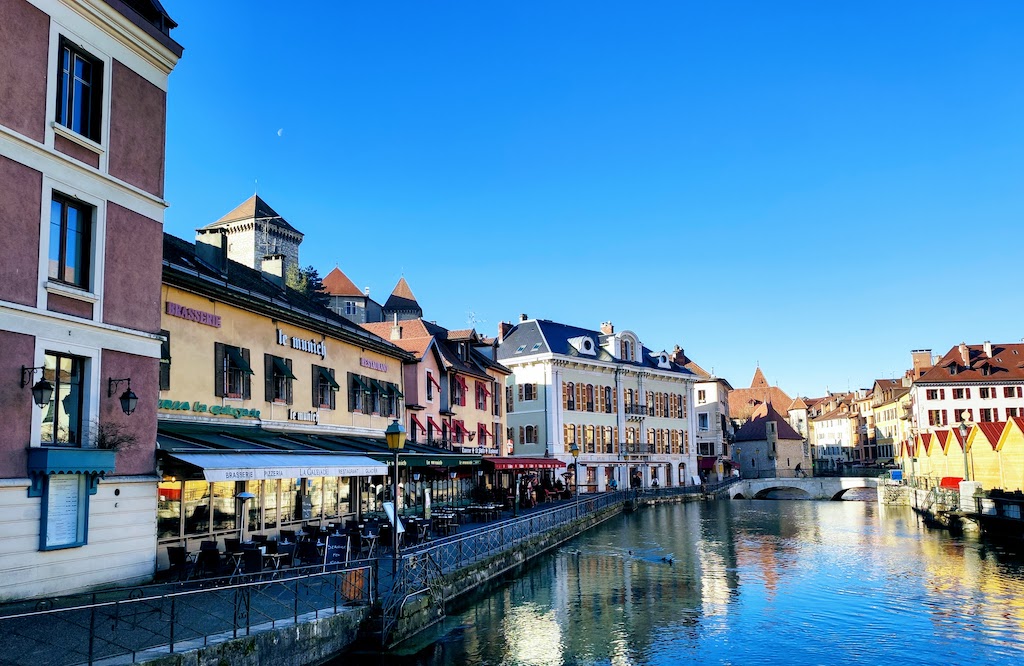

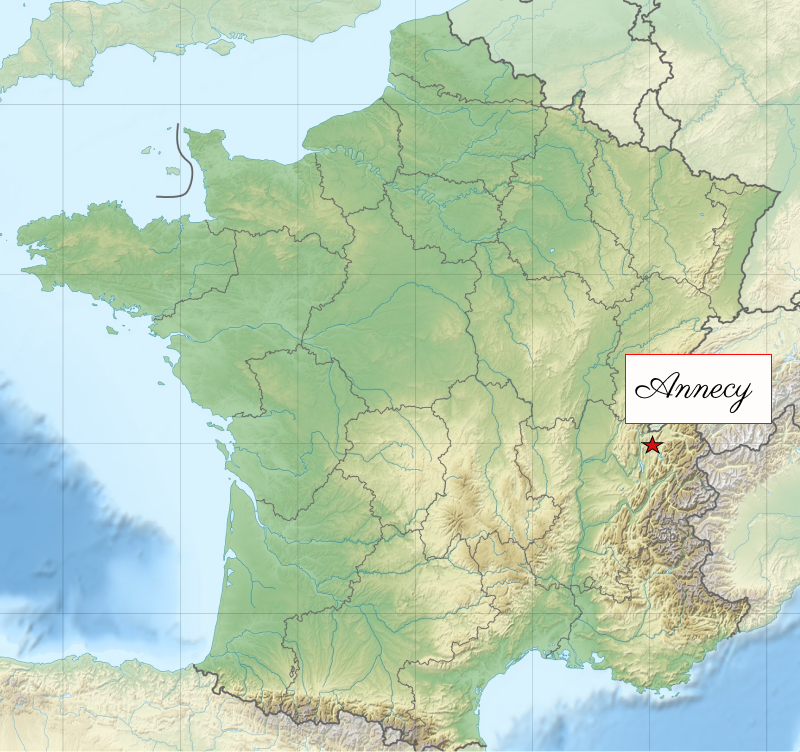

Annecy is located in the department of Haute-Savoie in the Auvergne-Rhône-Alpes region of southeastern France.
The city is nestled between the lake and mountains, within a green region. I’m not saying that because it’s the city of my teenage years. Not only! 😊 After traveling quite a bit, seeing other breathtaking landscapes, every time I come back here, I marvel again at the beauty of its mountains. It’s as if, each time, I was rediscovering my home town.
That said, I invite you to follow me through the streets that rocked my adolescence!
My tour of Annecy
I started the visit by the “Centre Bonlieu” or the “National Scene of Annecy.” It is a cultural complex where one can find theaters, a library, and the tourist office — essential for travelers.
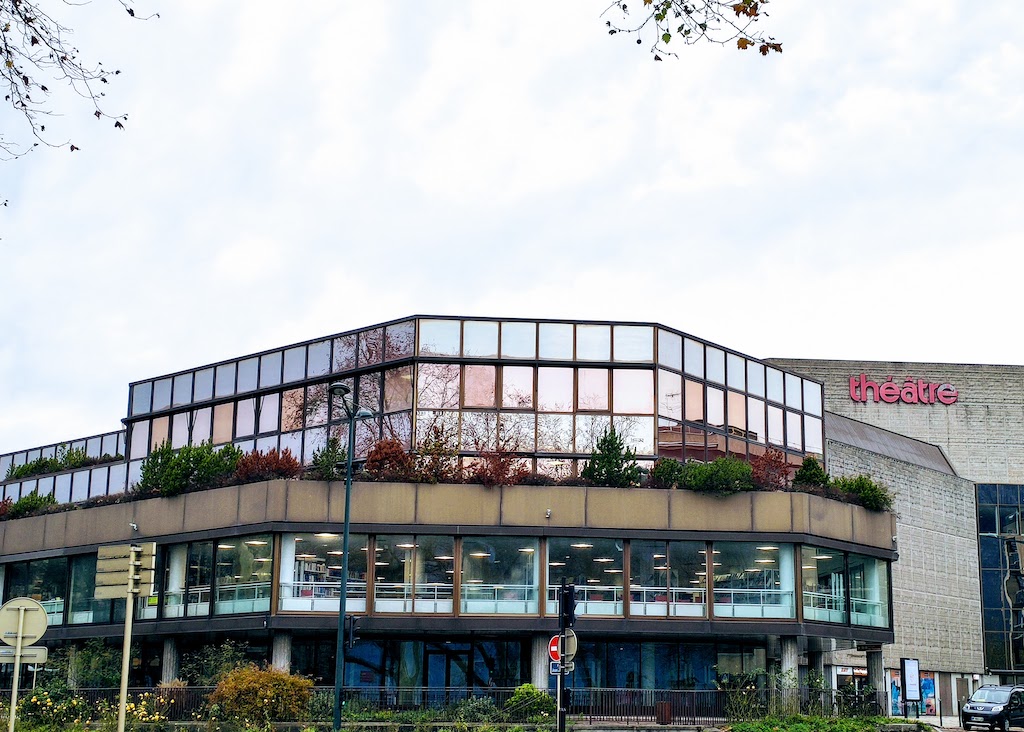

It was built on the former site of a convent of the Cistercian Sisters. The Cistercians were from Bonlieu, a hamlet 30 km from Annecy, which gave the building its name.
The “Pâquier” or “Champs de Mars”
I left the “Centre Bonlieu” towards the lake, to go to the “Pâquier.”
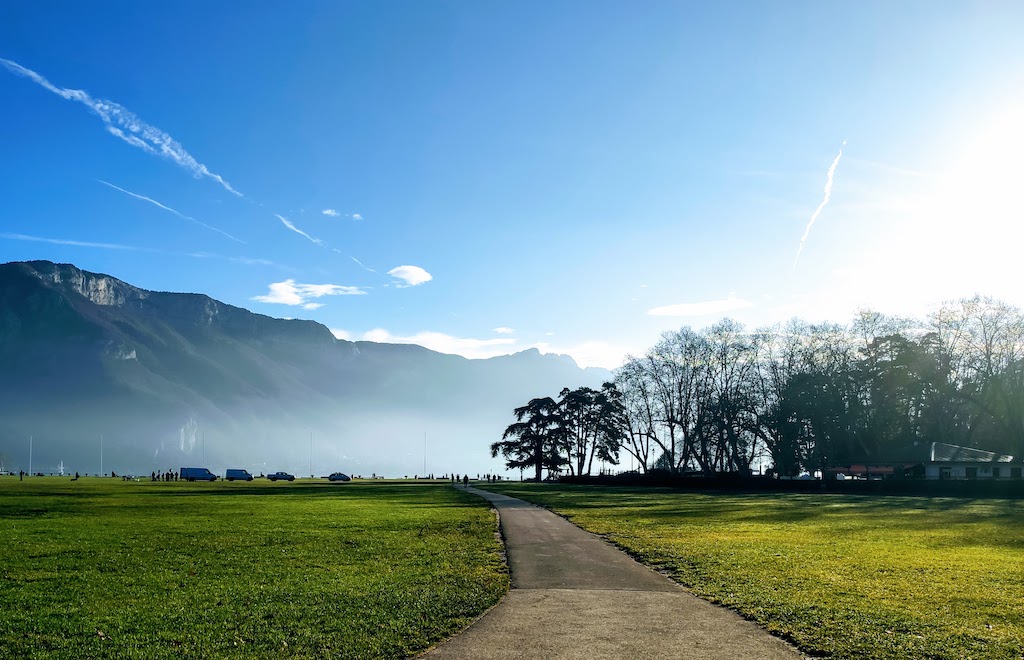

“Pâquier” is the Franco-Provençal word for Pasture. The land being too swampy for construction, it was used to gather for animals and executions! But that was a long time ago!
Today it is a set of parks and gardens with the “Gardens of Europe,” the “Gardens of the Imperial Palace,” and the “Annecy-le-Vieux Municipal Beach.” These are popular gathering places in the area for locals and tourists alike.
Gardens of the Imperial Palace
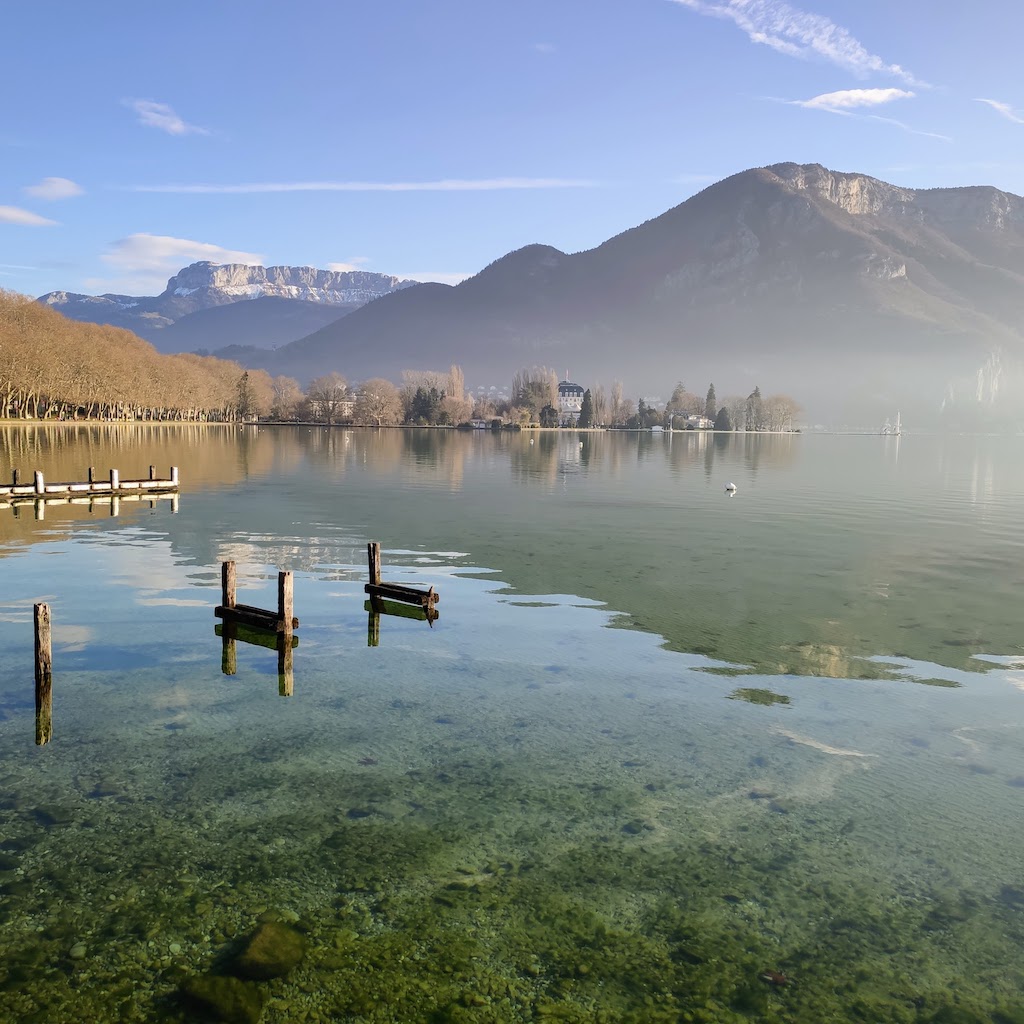

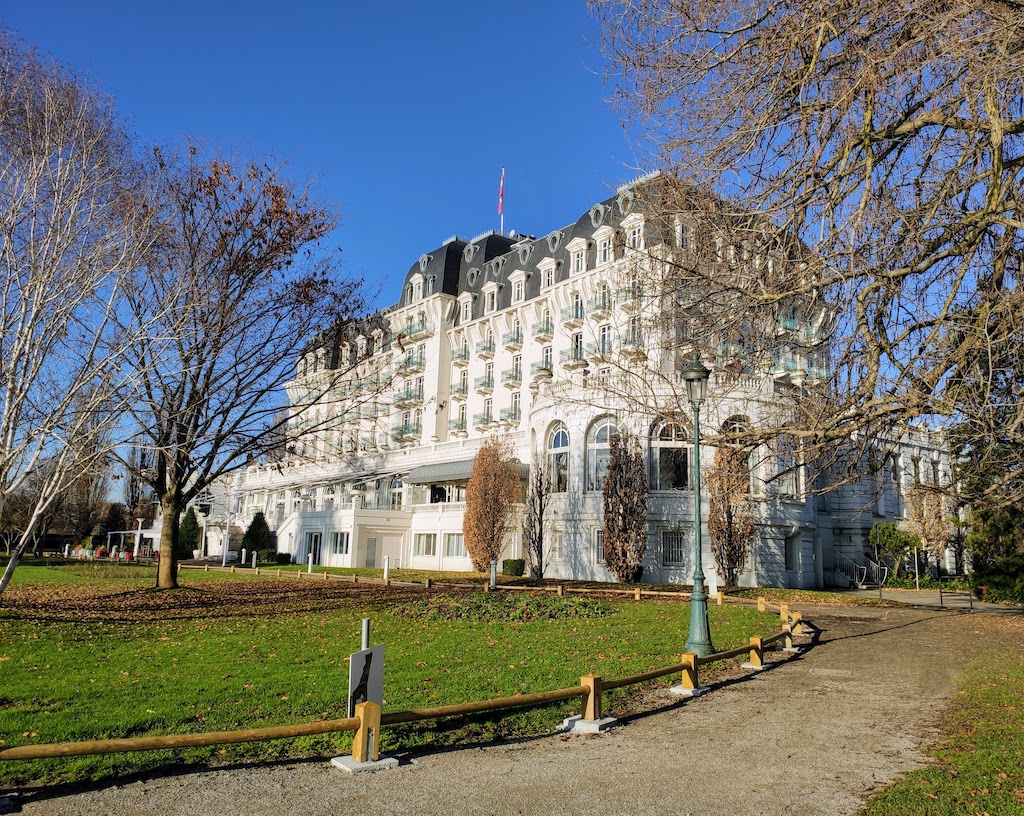

At the end of the Pâquier stands the “Imperial Palace” which was inaugurated on July 14, 1913. At the time, it included a Louis XVI-style restaurant and empire-style lounges.
When the Imperial Palace closed its doors in 1965 because it was no longer profitable, Annecy acquired the building to ensure that it would not be transformed into apartments. The city then decided to sell it only when an investor undertakes to restore it to its former splendor. And it was a success!
Annecy-le-Vieux Beach or Albigny Beach
This budding beach is a harmonious setting for bathers and walkers. It is one of the most famous places around the lake.
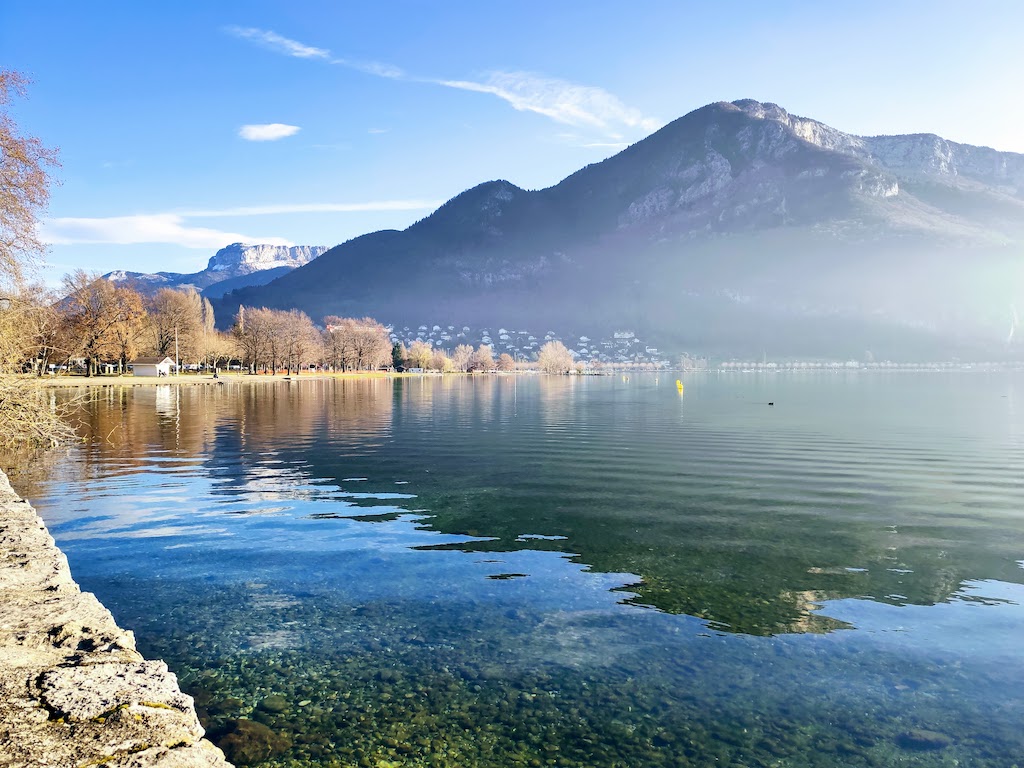

Gardens of Europe
To get there, I took the “Pont des Amours”.
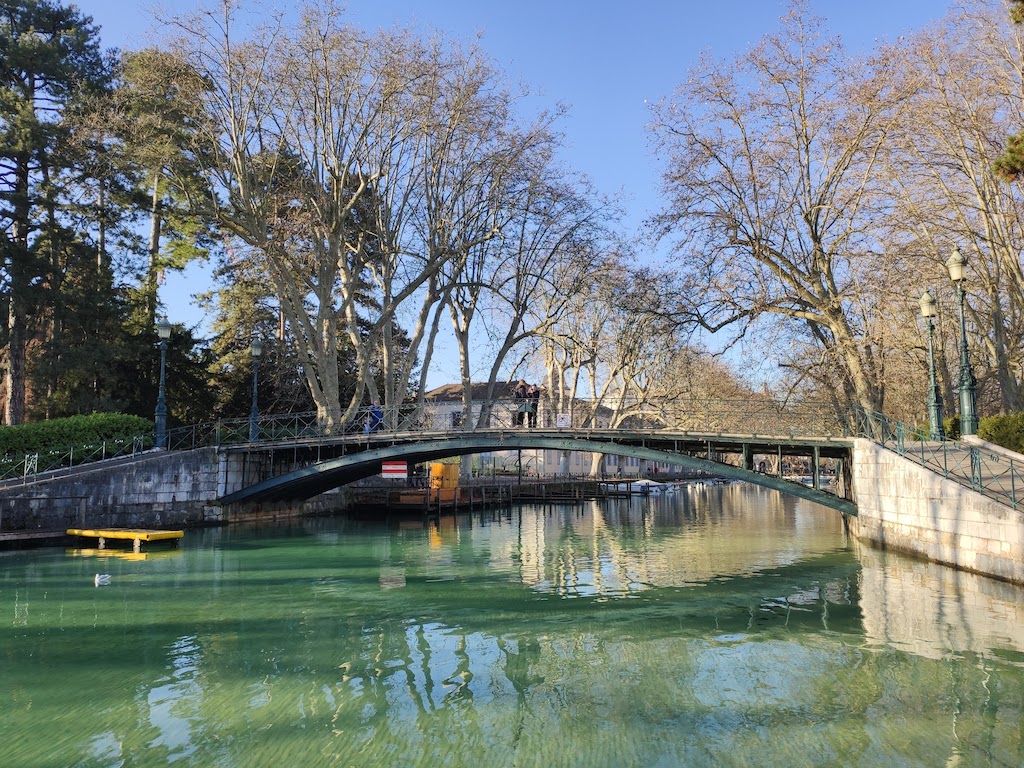

An urban legend has it that lovers who kiss in the middle of the bridge while looking at the lake will be united for life. 😍
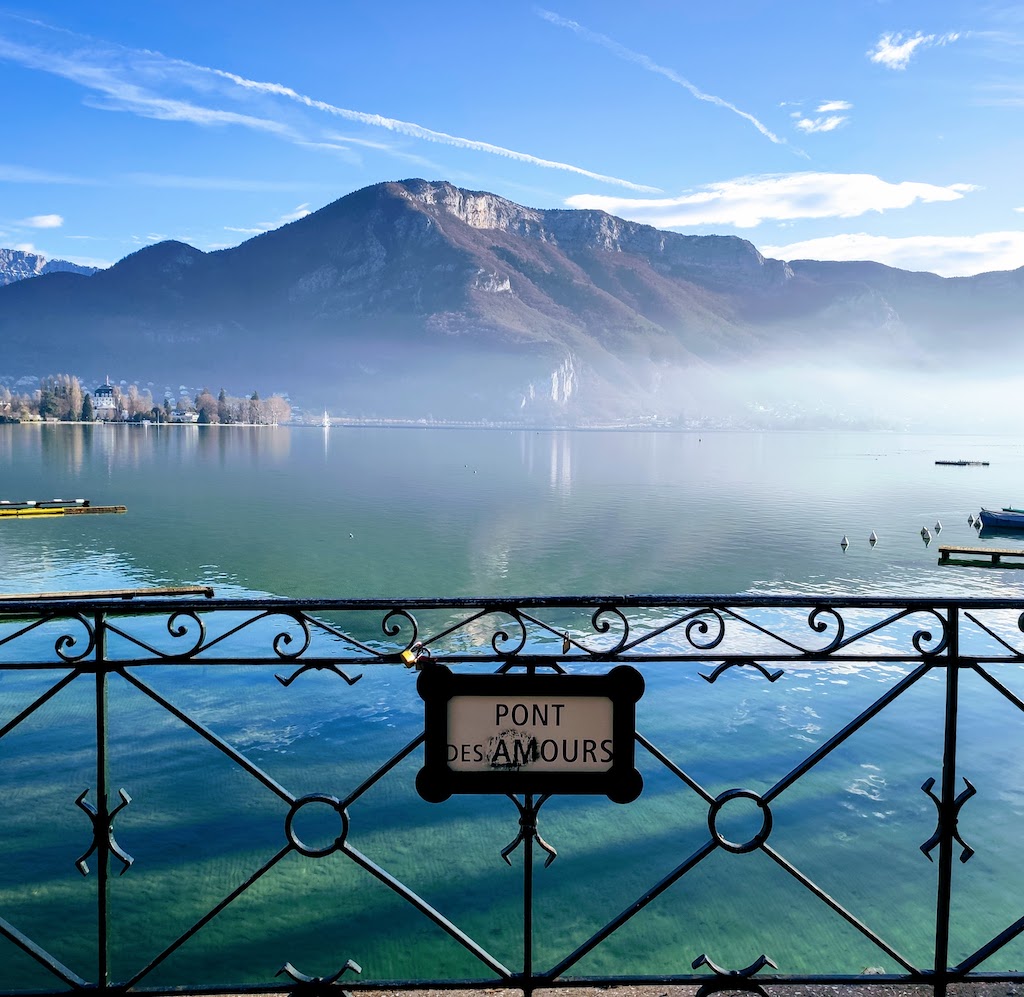

Its official name is the “Public Garden Bridge”, but no one calls it that anymore.
The name of the catwalk, “Le Pont des Amours,” would come from the fact that it was once the place of the priced love of prostitutes!
After crossing the footbridge, I found myself in the “Gardens of Europe.” This beautiful shady park, quieter and more intimate than the Pâquier, is the ideal place to get away from the hustle and bustle of the crowd during the peak season.
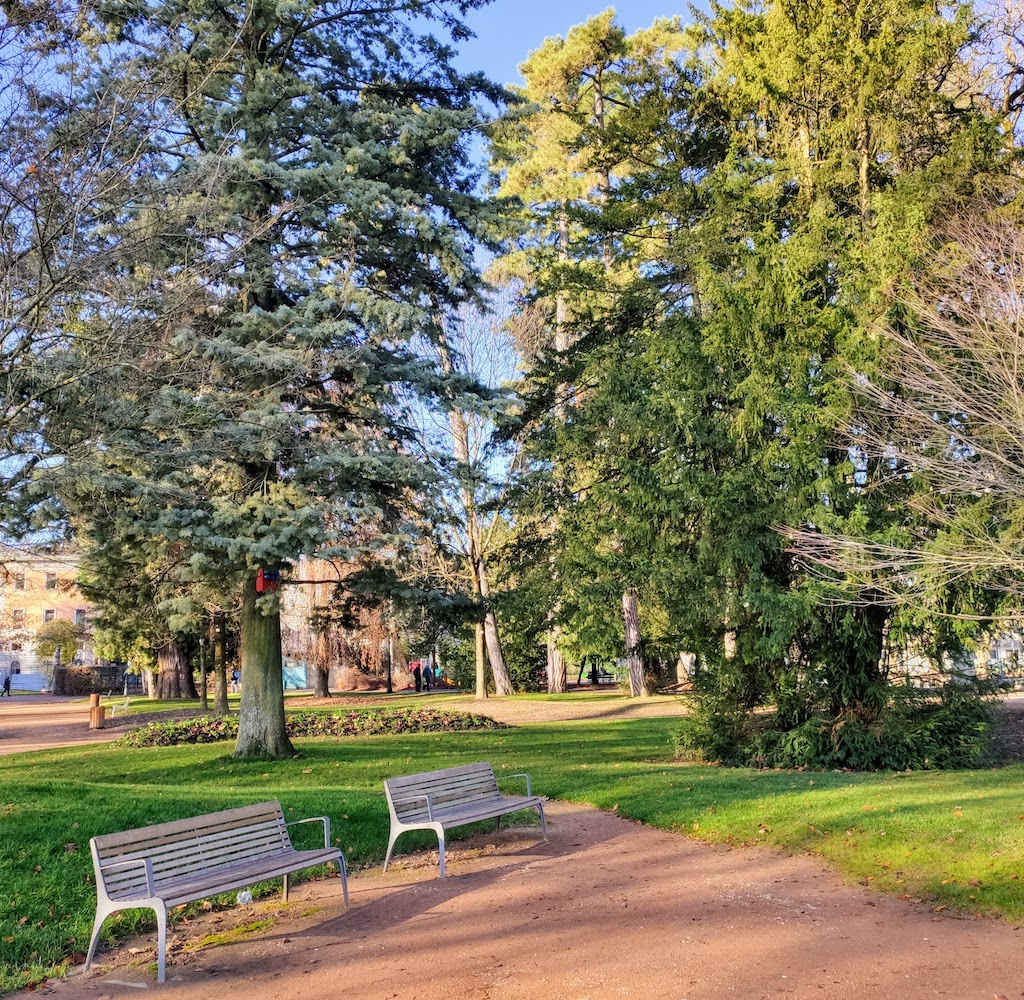

I walked through this green park to the City Hall that I bypassed.
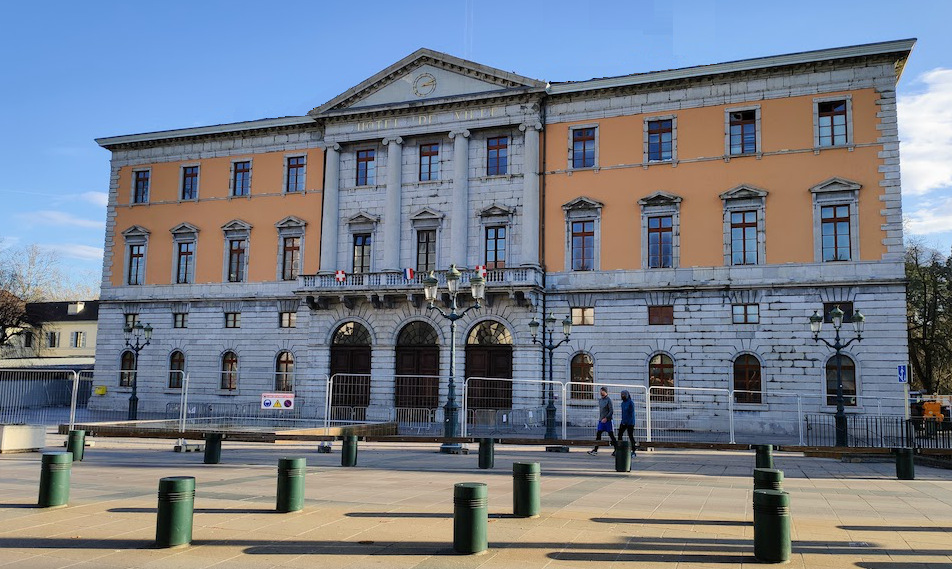

It was built in a neoclassical style recognizable by the columns and pediment on its façade.
In front of the city hall, one of the Art Deco districts of Annecy. This architecture of the 1930s is quite incredible and gives all its beauty to the then “new” city.
One can see the buildings built in this style and admire their curves’ beauty.
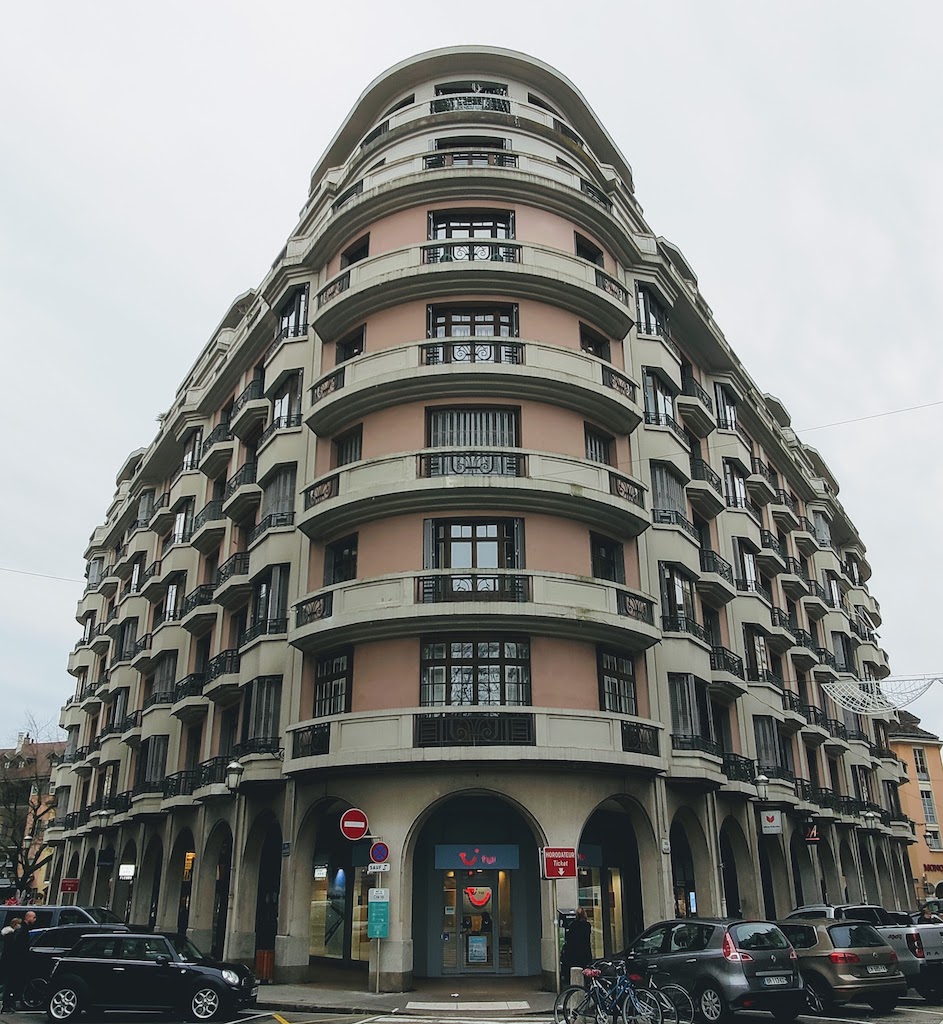

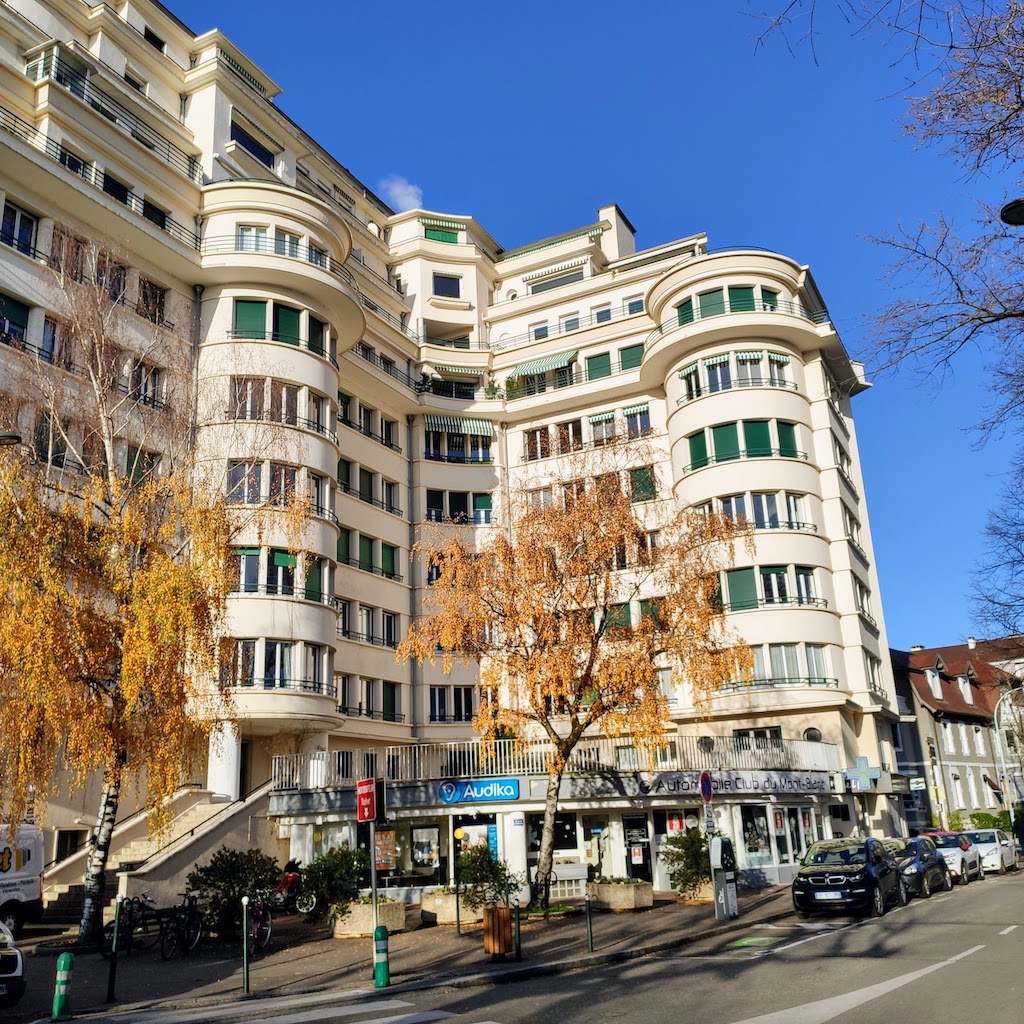

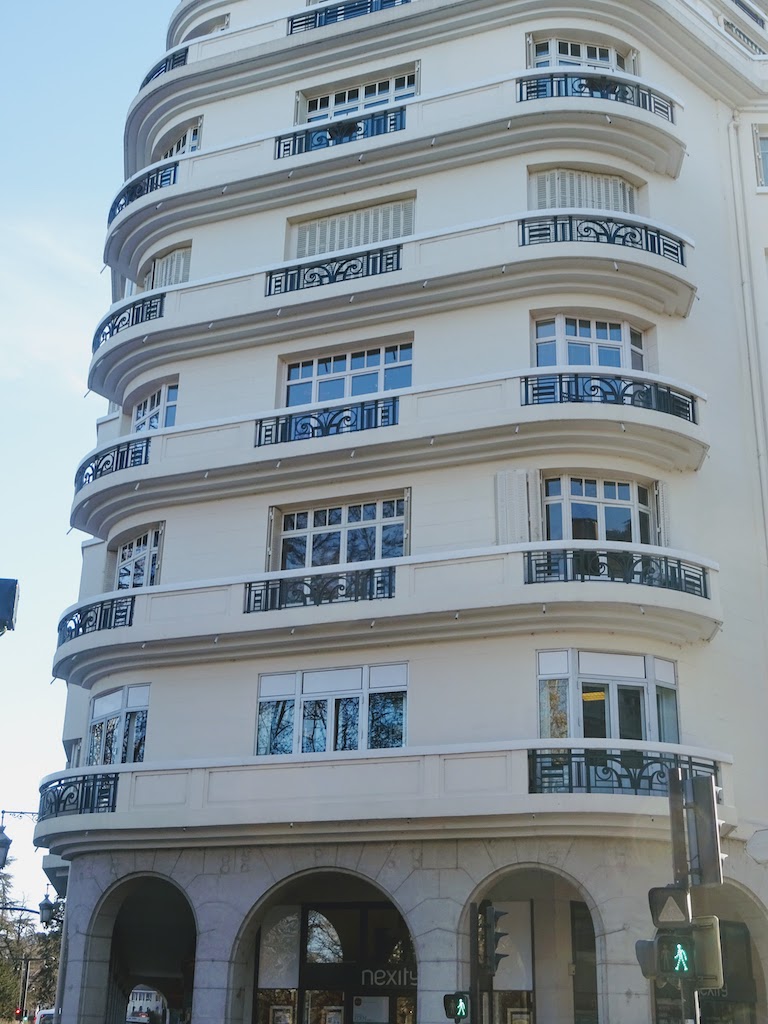

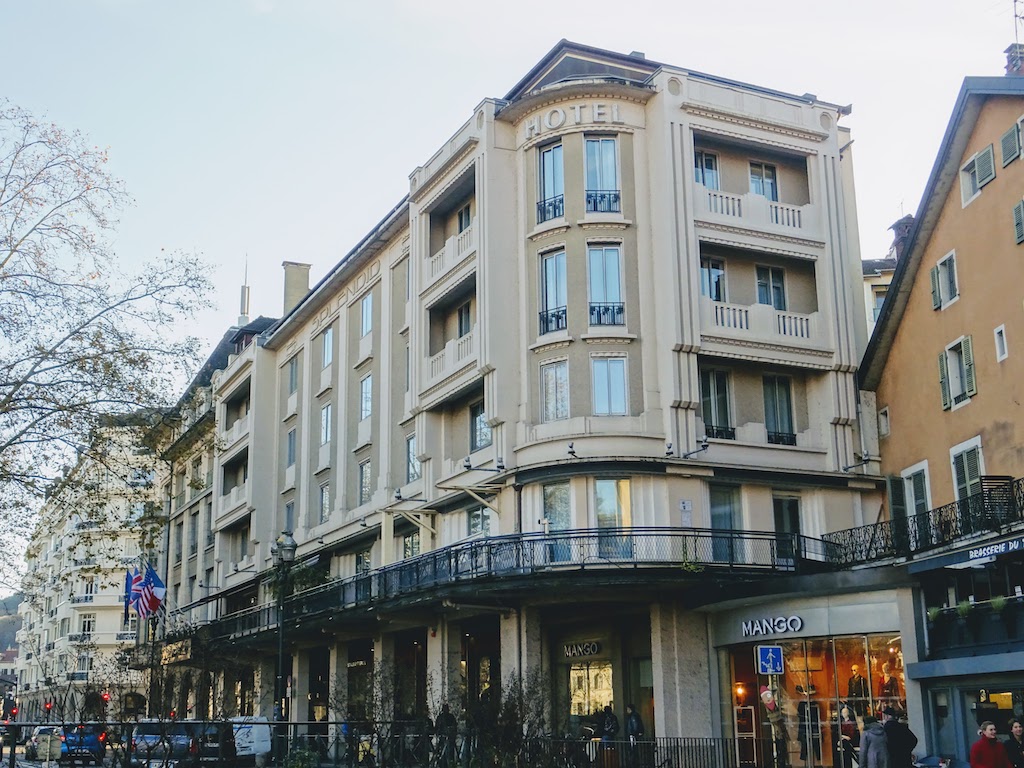

Some indications to recognize Art Deco architecture.
There are no right angles, and there are bow-windows, pediments, and balconies in ironwork.
The old town of Annecy
I walked now to the outskirts of the old town. I stopped at the church of St. François of Sales or the Church of the Italians. Annecy’s Italian community frequents the church, its priest is Italian, and mass is said in this language.
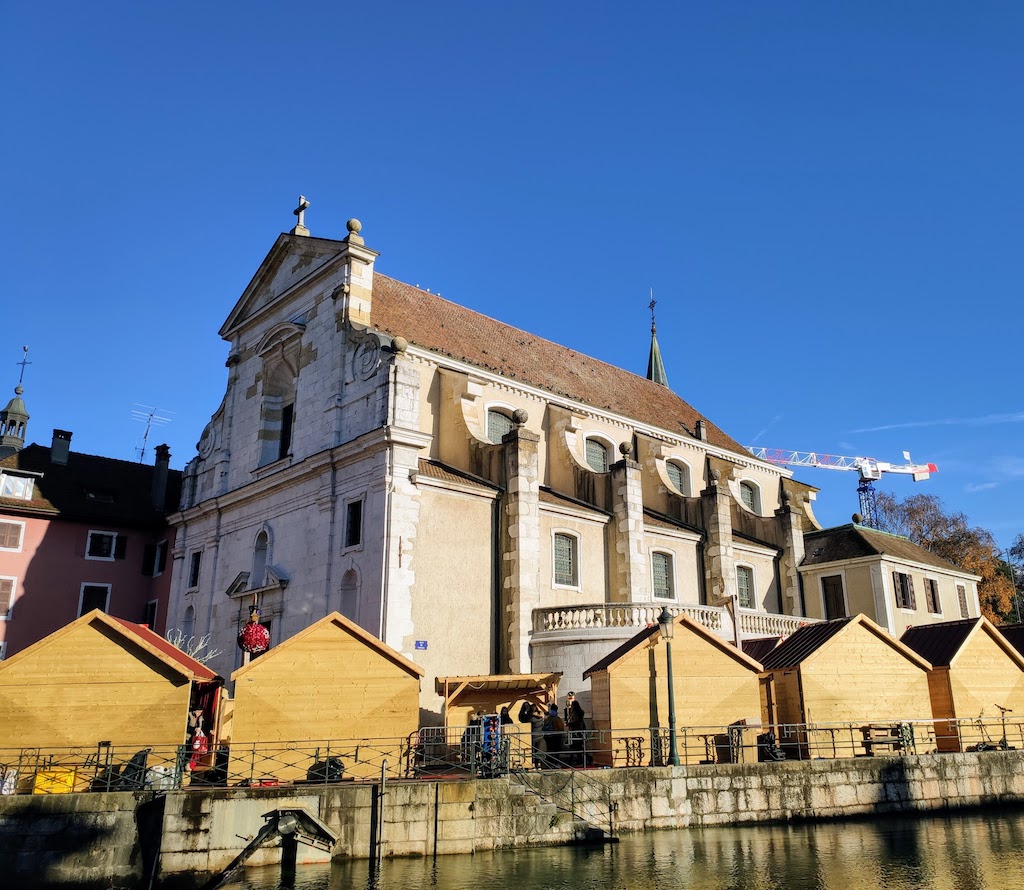

The church was part of a convent. One must imagine that all the buildings attached to it were the place of life of the nuns.
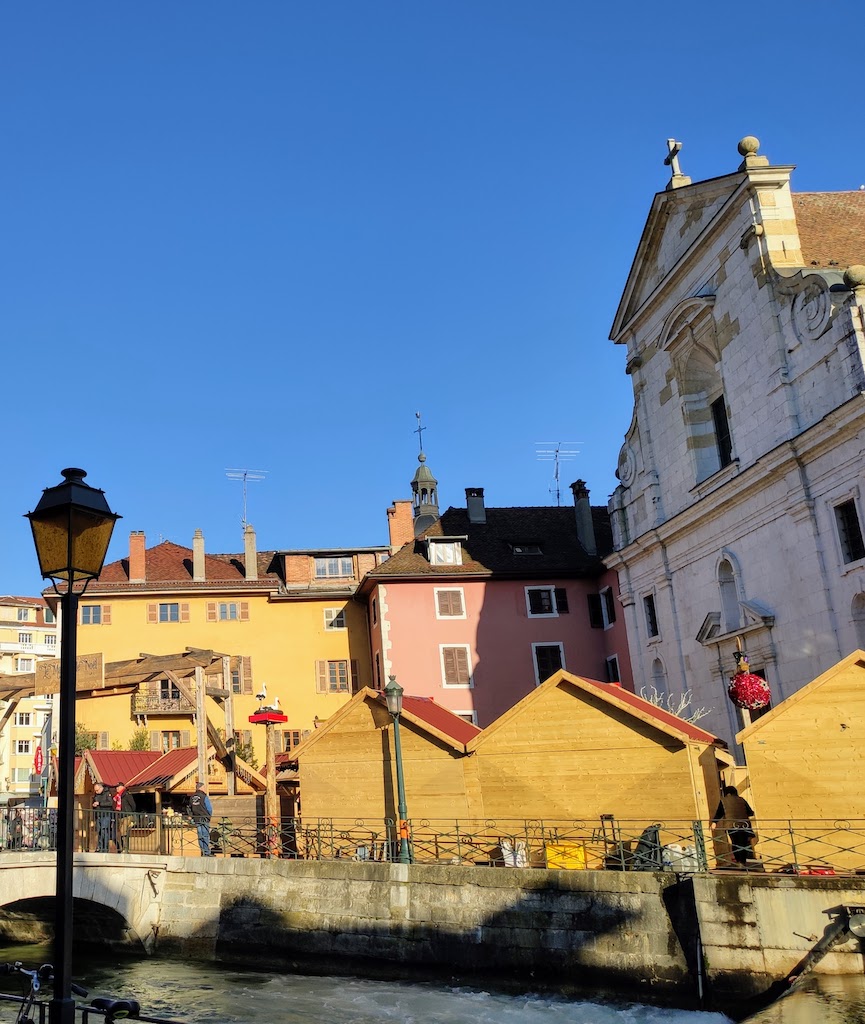

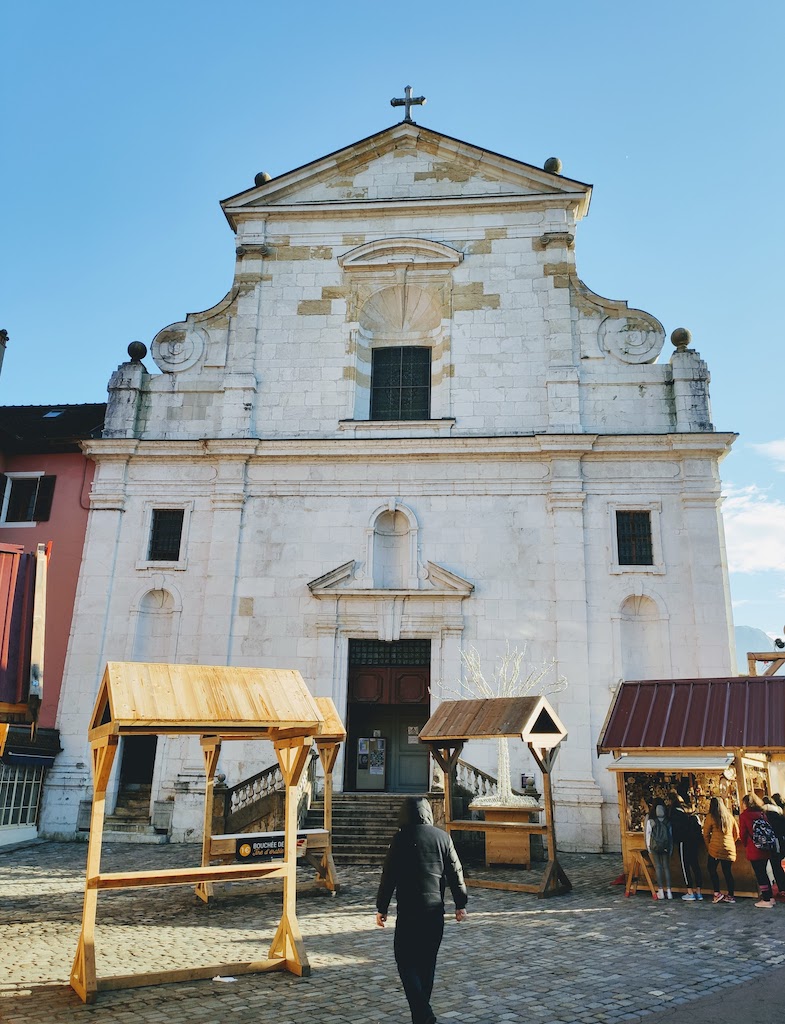

Do you notice the little door on the left of the main gate? If you approach and look inside the entrance, you will see the old staircase that connected the convent to the church. A small wooden door allowed the sisters to go to mass without being seen. Indeed, they had no right to show themselves!
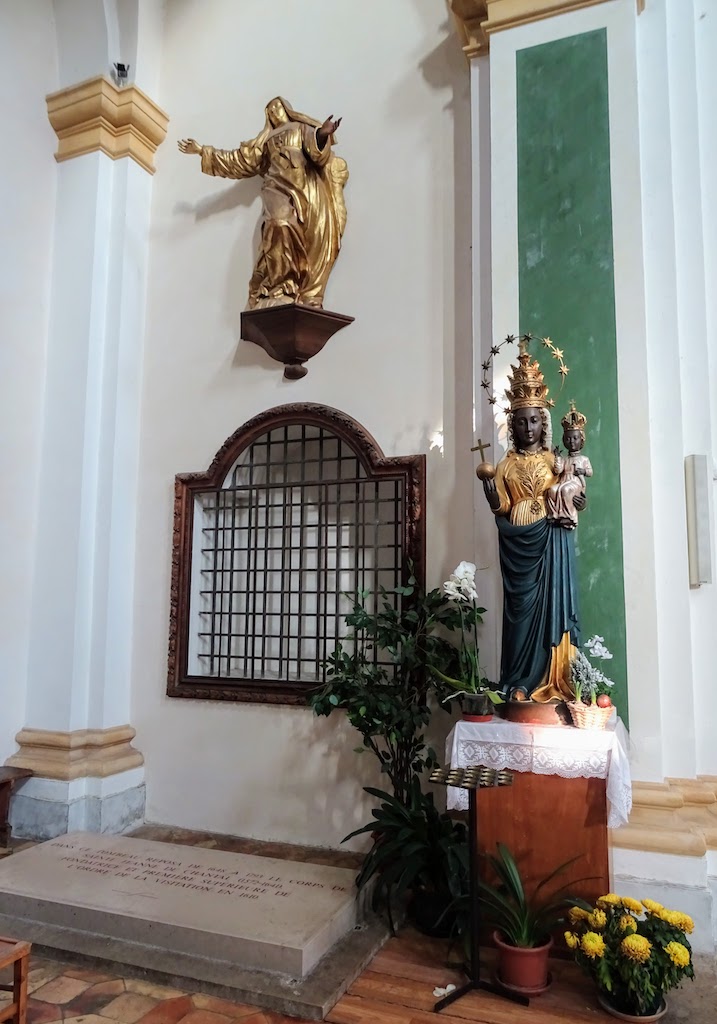

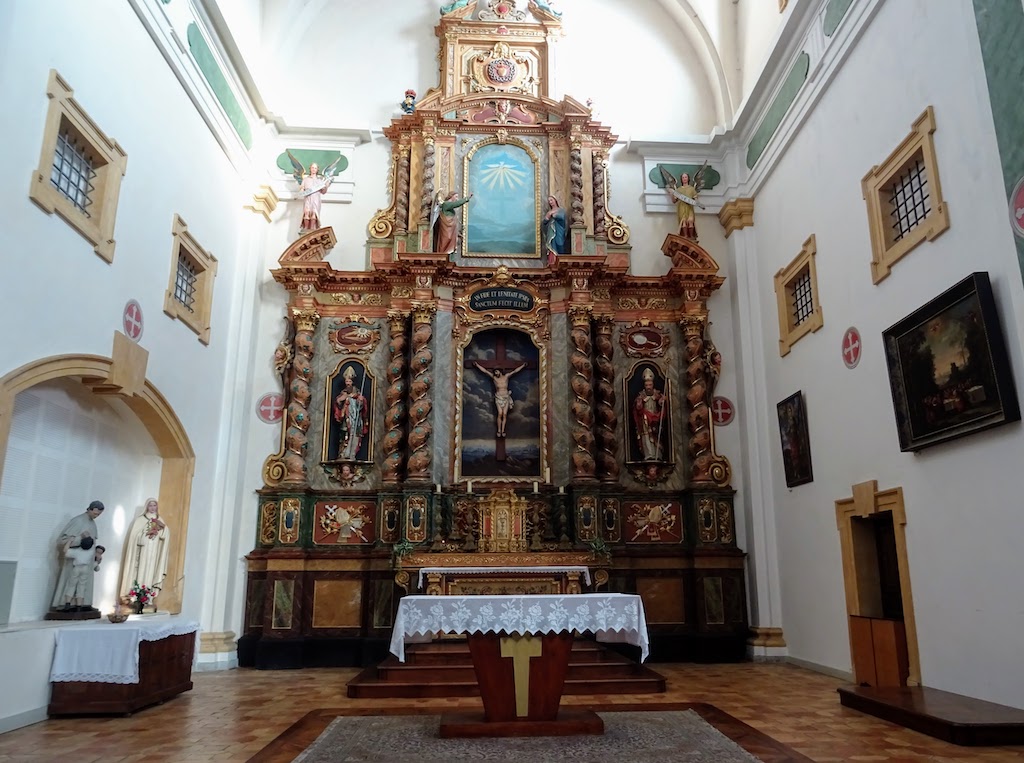

The nave of the church.
On the side walls at the top, one can see the gates behind which the nuns were hidden to attend mass.
Did you know Annecy’s nickname is the “Venice of the Alps”? Suffice to say the importance of the rivers that surround the city. They played a crucial role in its development.
I wanted to introduce them to you! 😄
The Thiou
The Thiou is the natural weir of the lake along which the old town was built. Workshops and industries used it to feed their mill, which allowed the development of medieval crafts. It was not until the middle of the 19th Century when water energy was no longer used for business that it became the object of a walk. The city then built docks to accommodate the first tourists.
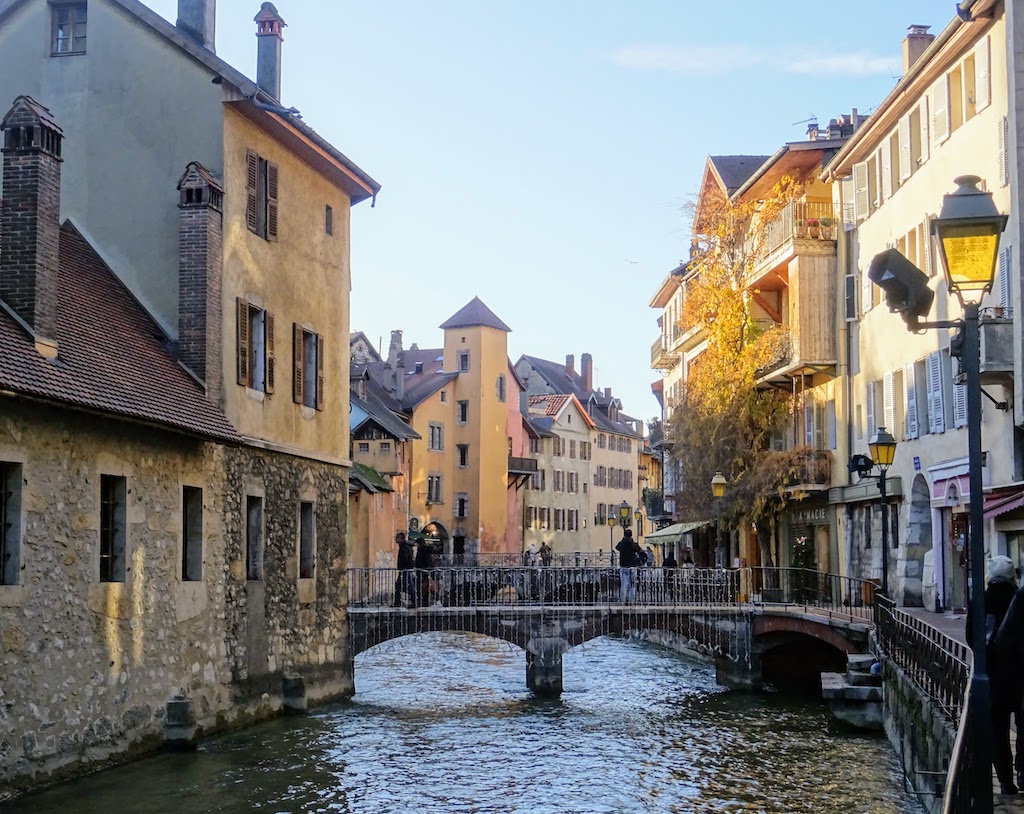

The Vassé Canal
The Vassé Canal was historically the water pit of the city in the Middle Ages.
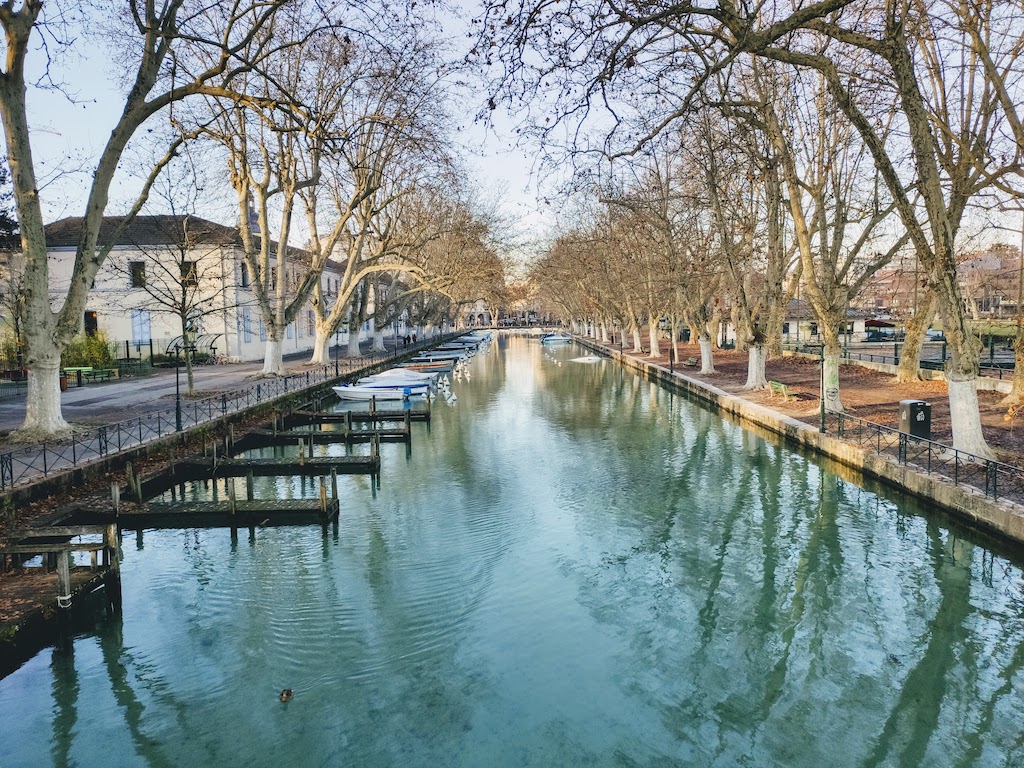

Today, it is covered by Vaugelas Street. It disappears under the city for a few hundred meters and reappears a little further to go into the Thiou. If you’re curious, head to passage Gruffaz!
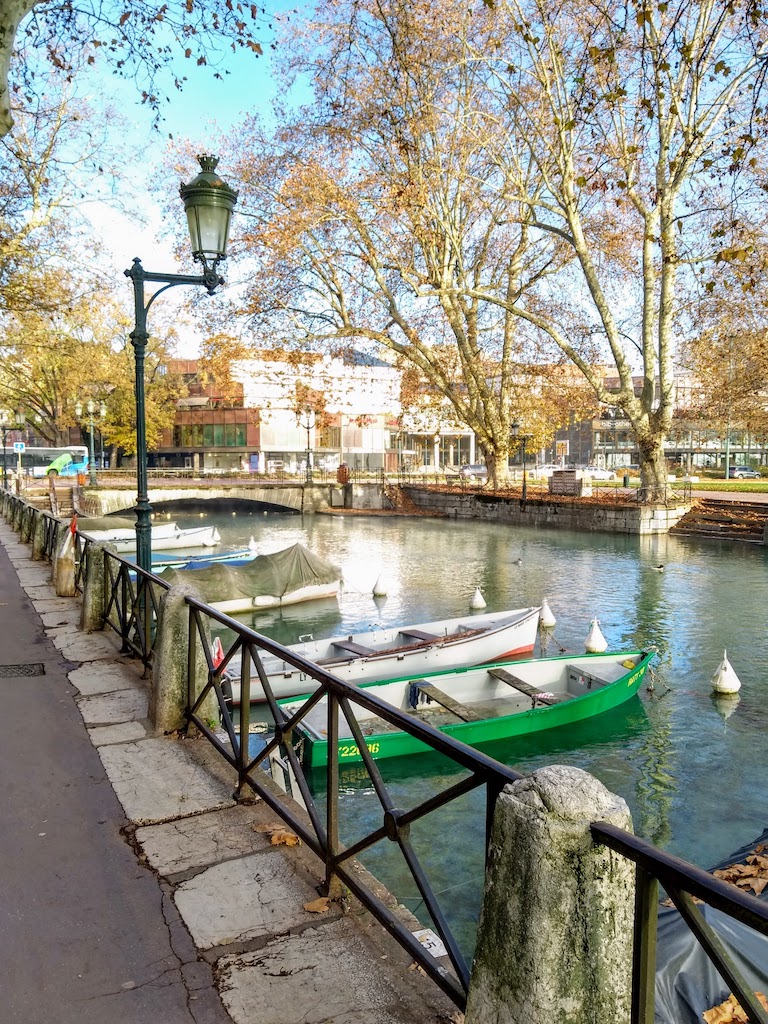

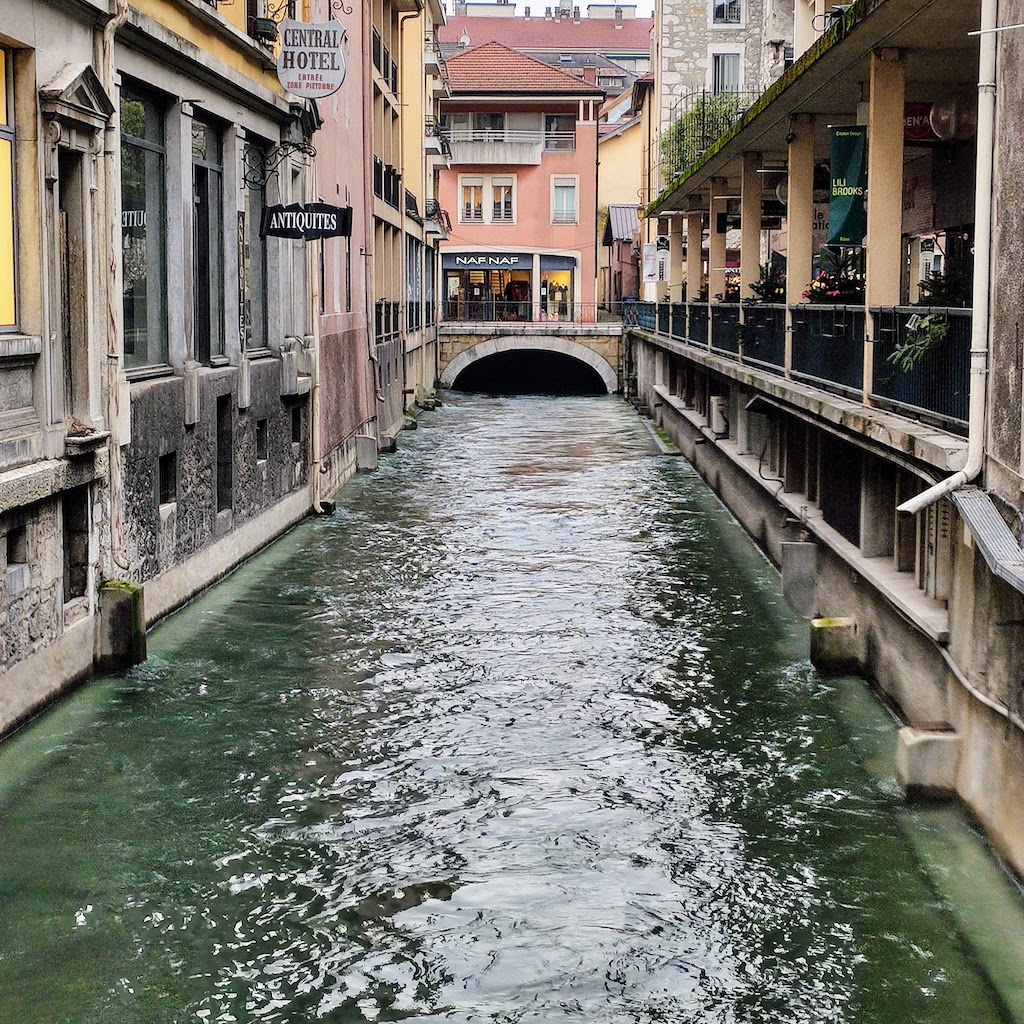

It disappears in the photo on the left and reappears on the right one.
Annecy’s Old Town in pictures
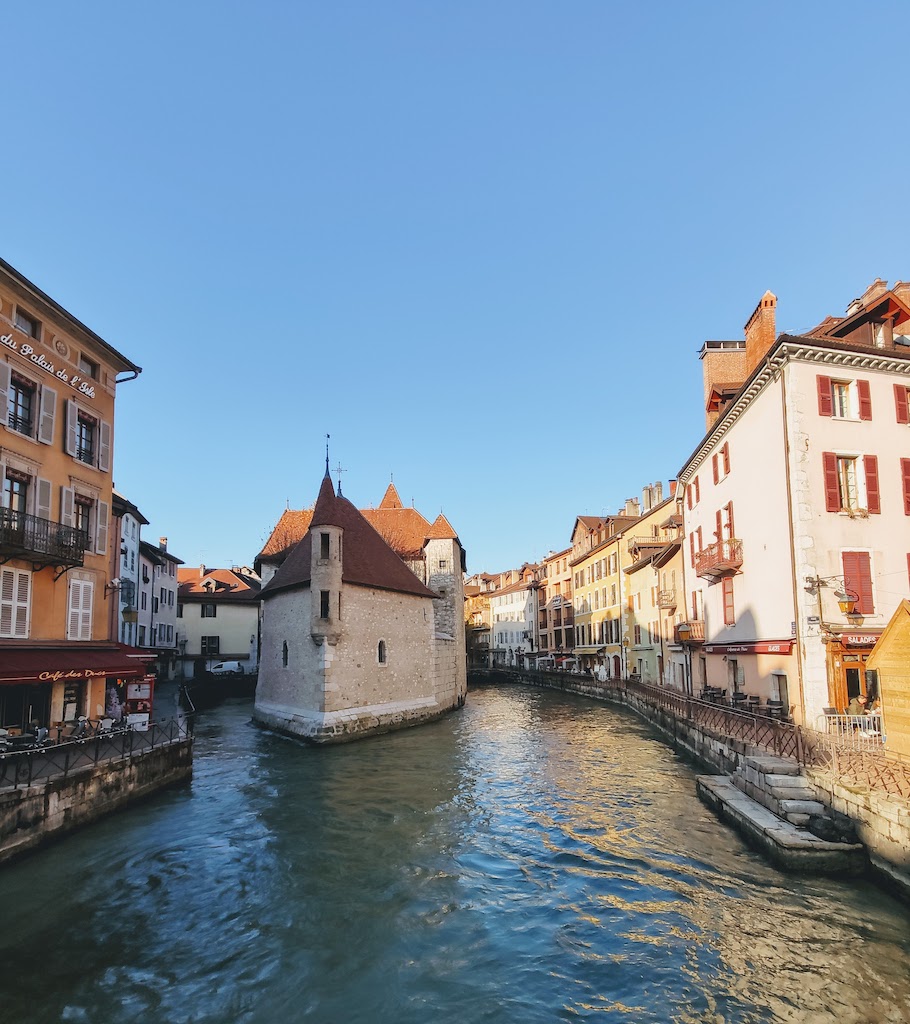

Le Palais de l’Isle
This former 12th Century mansion surrounded by the Thiou was in turn a prison, a courthouse and an administrative center.
Today, it is a museum that talks about the history of the region. One can visit the old cells, the dungeons, and the old chapel while learning about the prisoners’ lives at that time.
Annecy Castle
It is the former residence of the Counts of Geneva and then of the Dukes of Savoy-Nemours. In the 17th Century, it became a military barracks until 1947. The city bought it in 1953, restored it, and turned it into a museum.
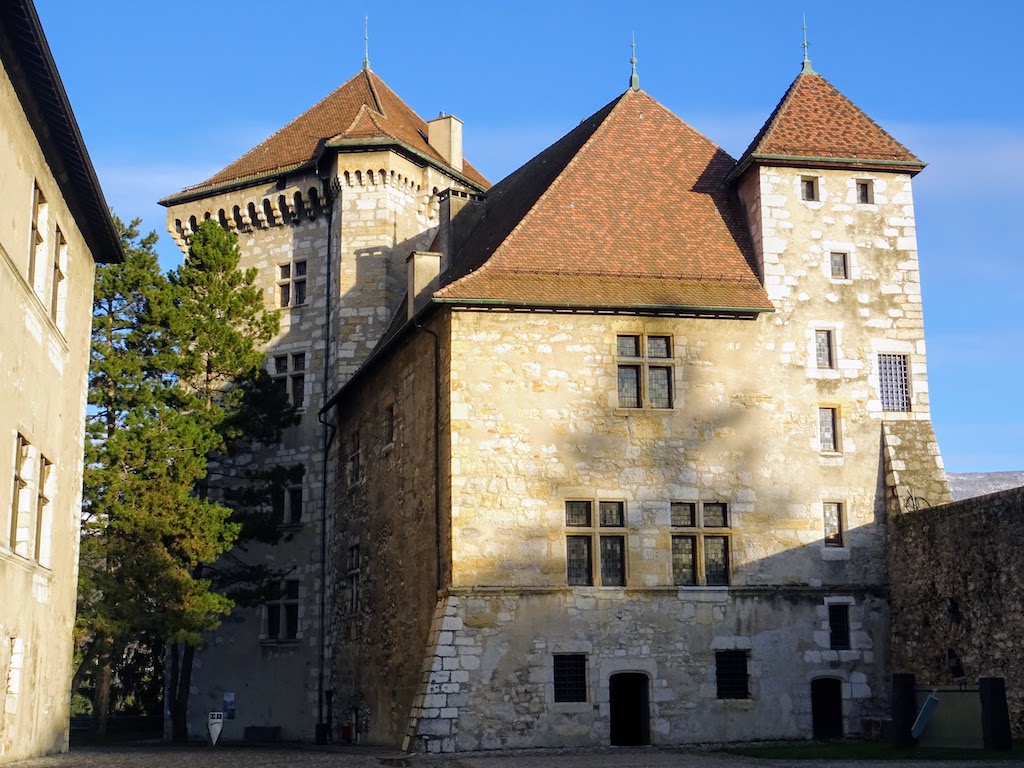

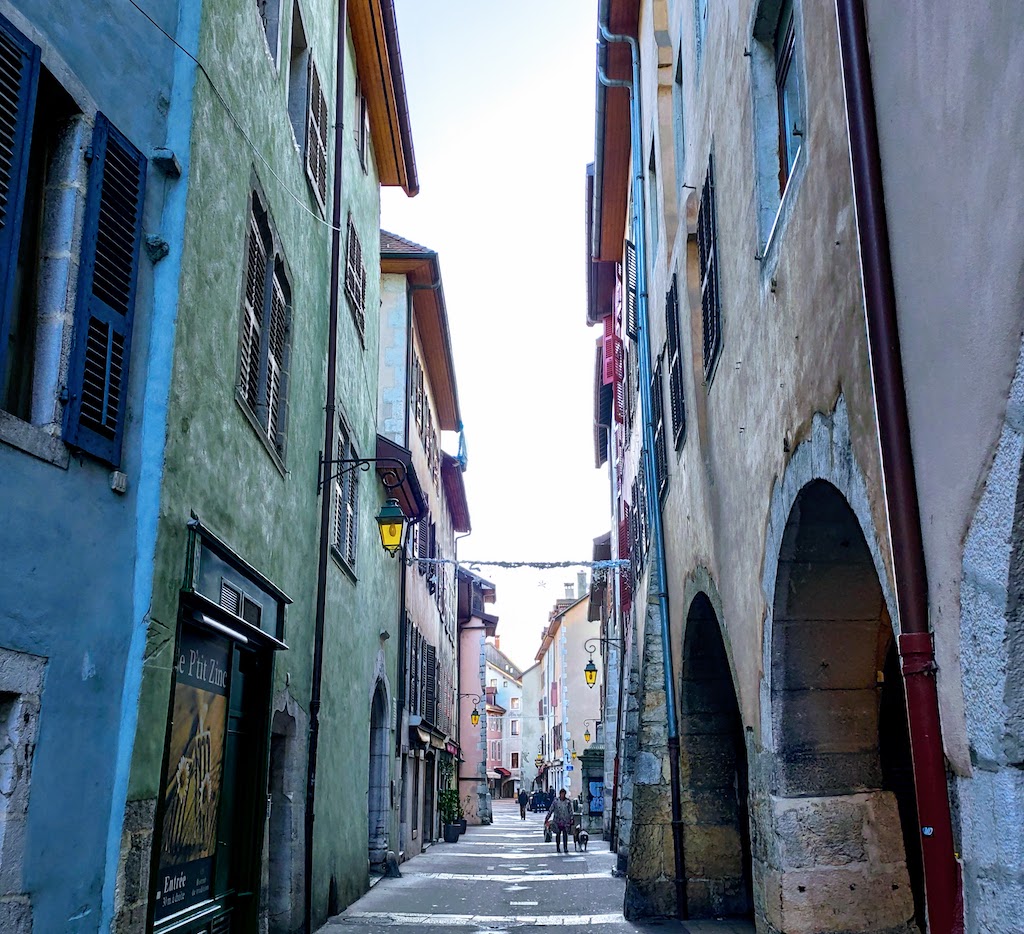

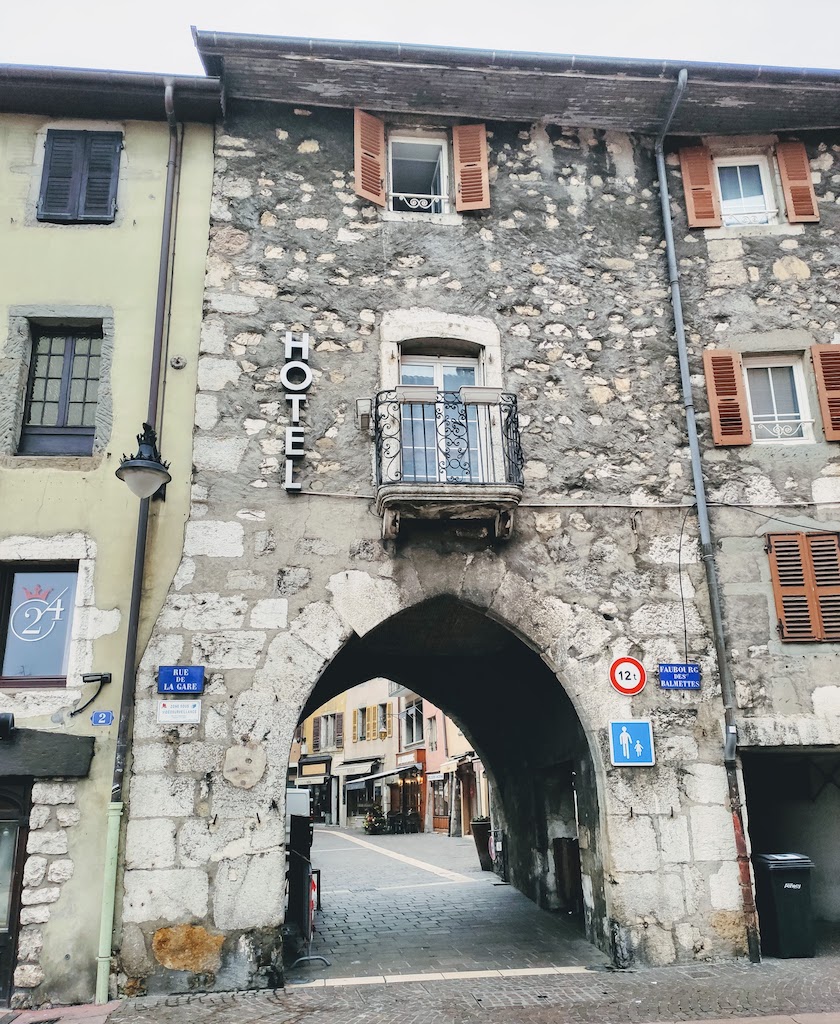



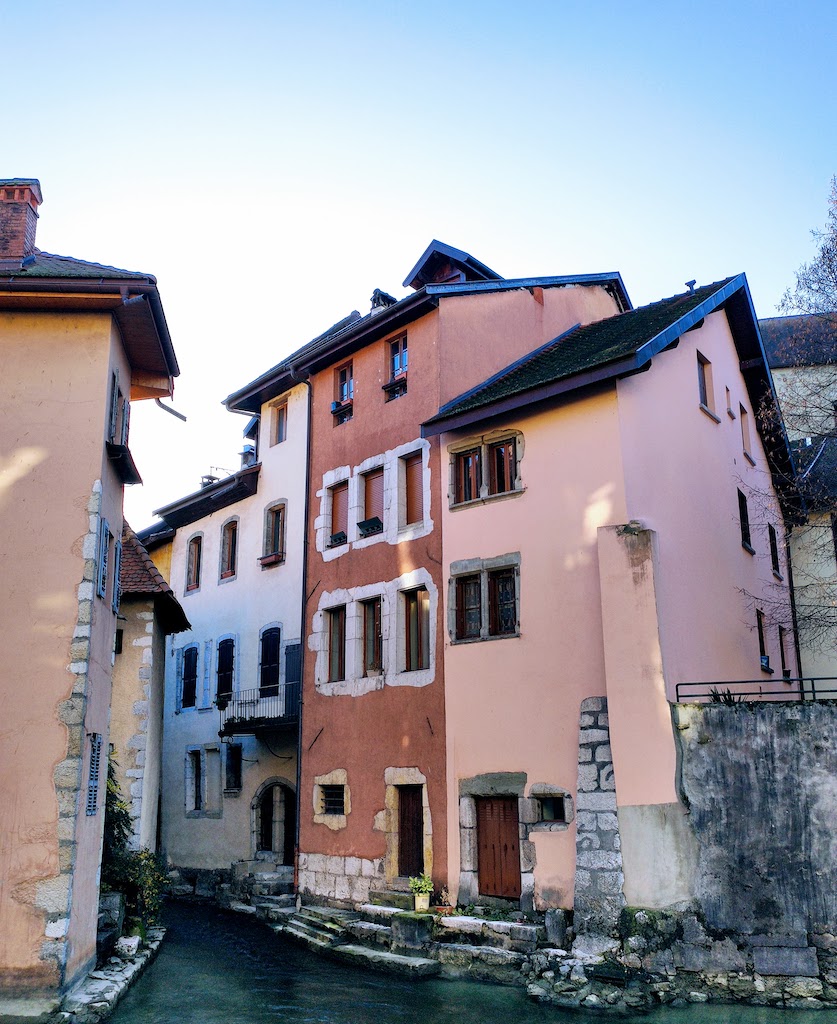

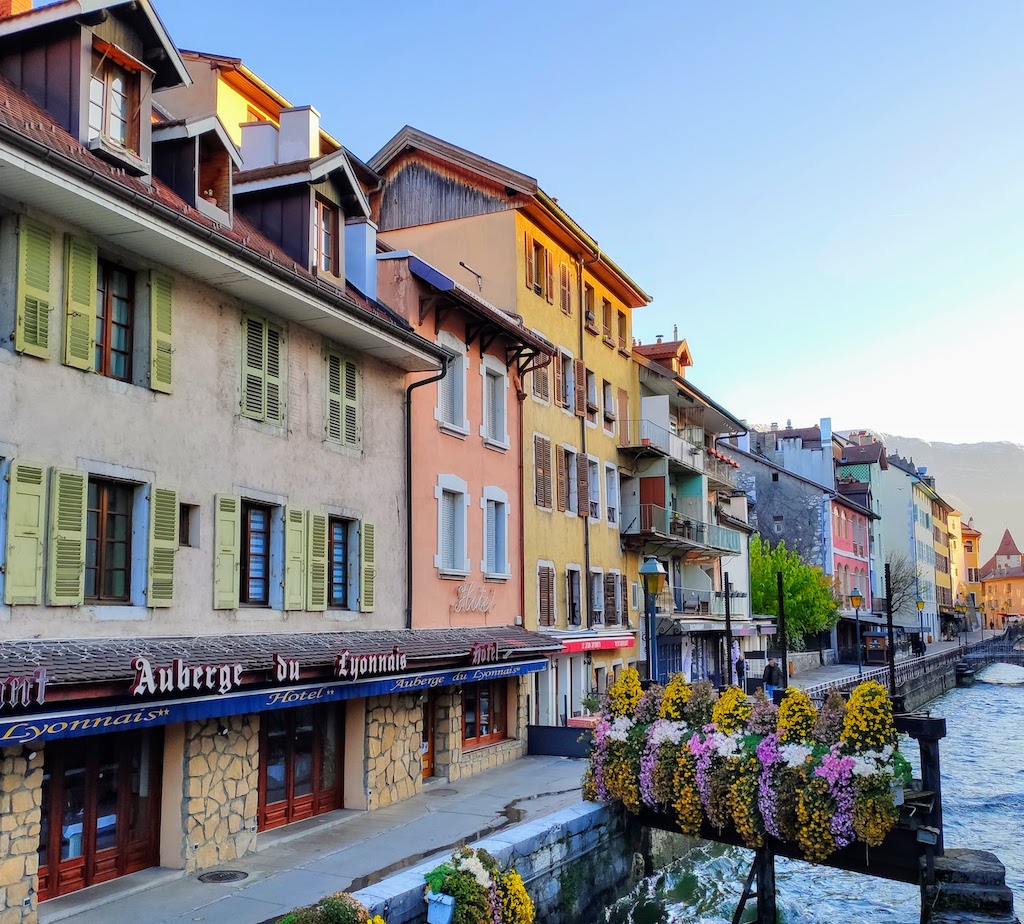

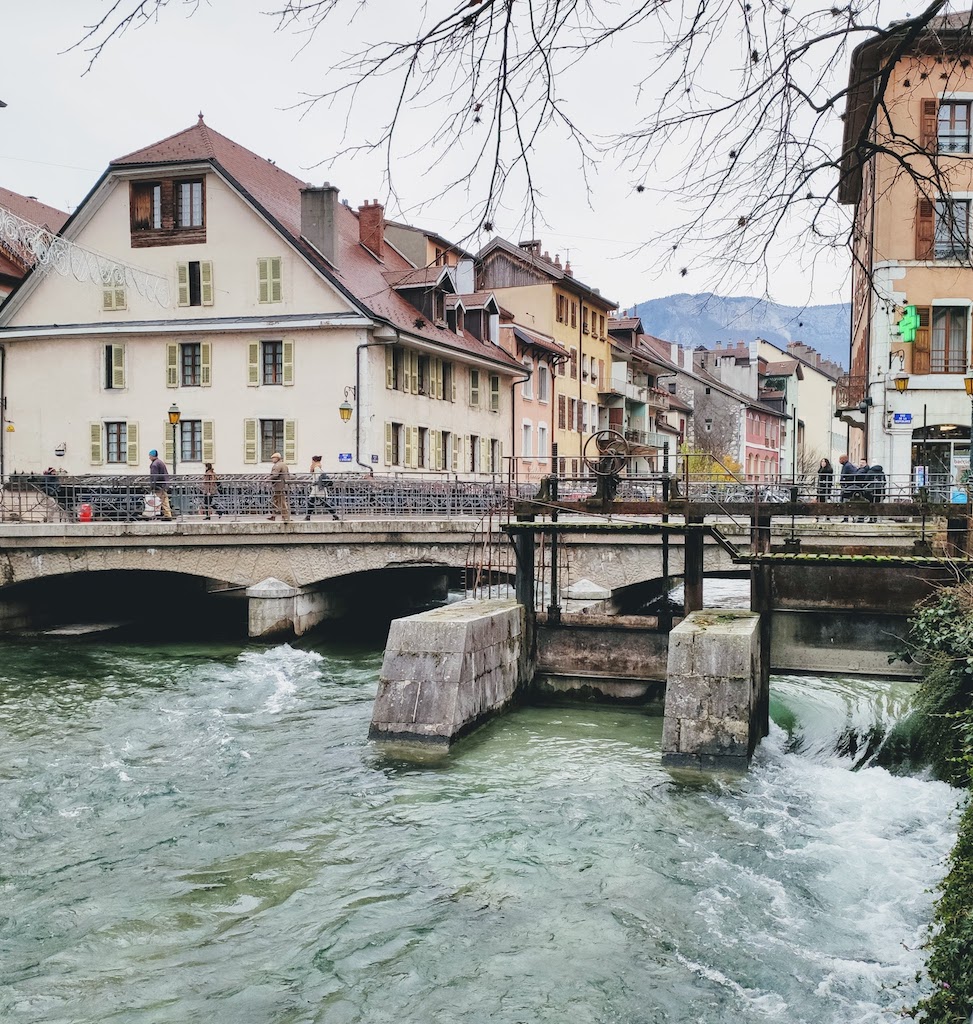

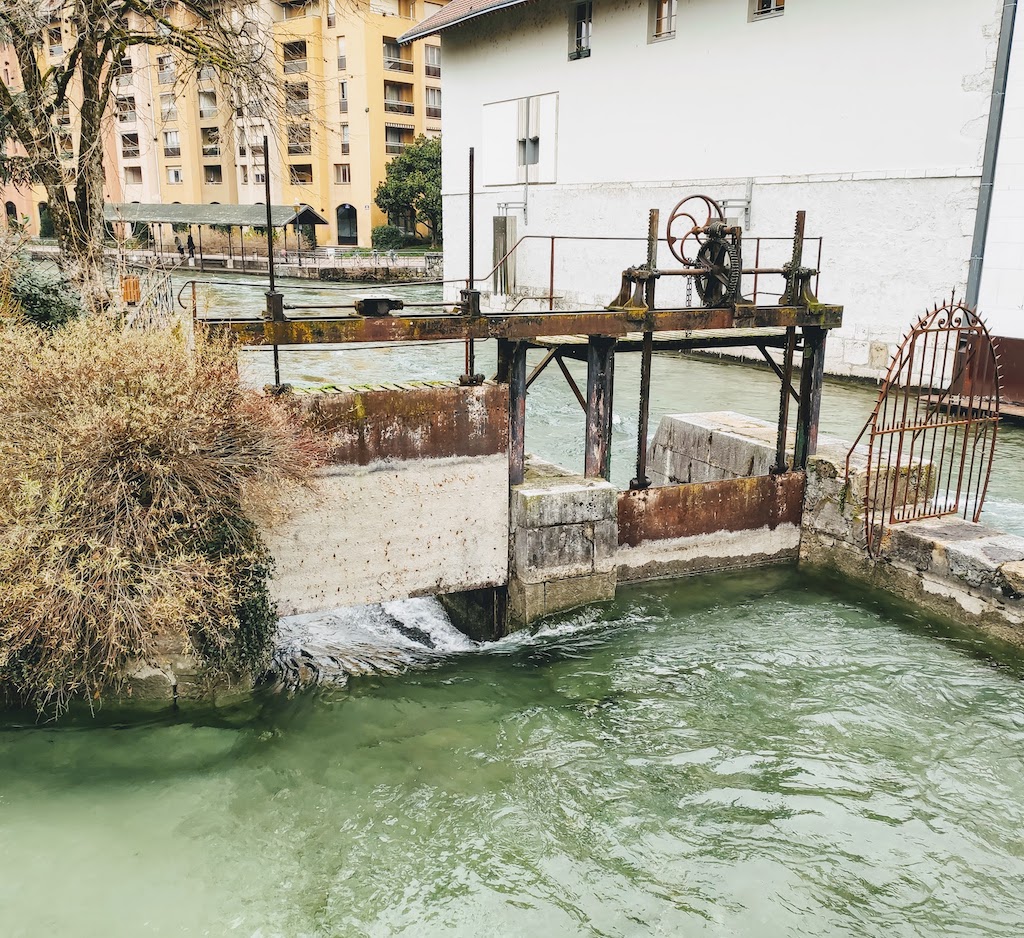

A set of valves, set up in 1874, was used to regulate the Thiou to prevent flooding.
I arrived at the “Manufacture” the last part of our visit. This area revolves around Saint Claire’s Square. Its special name comes from the fact that it is located on the old cotton-spinning site created in 1807.
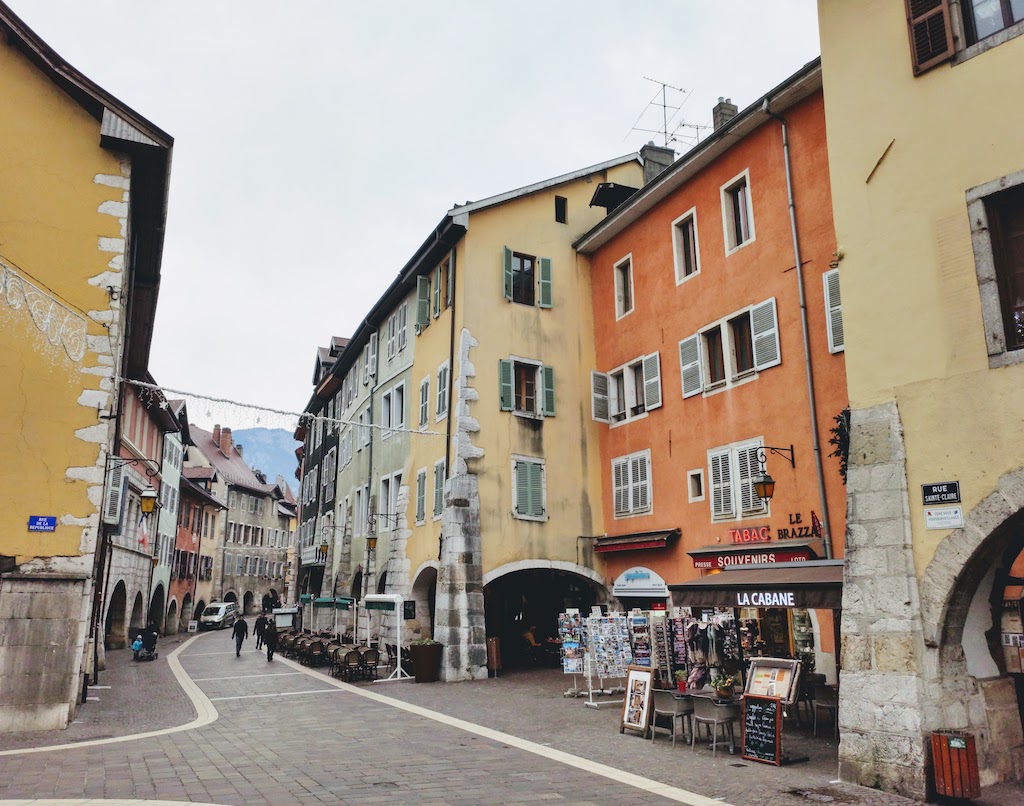

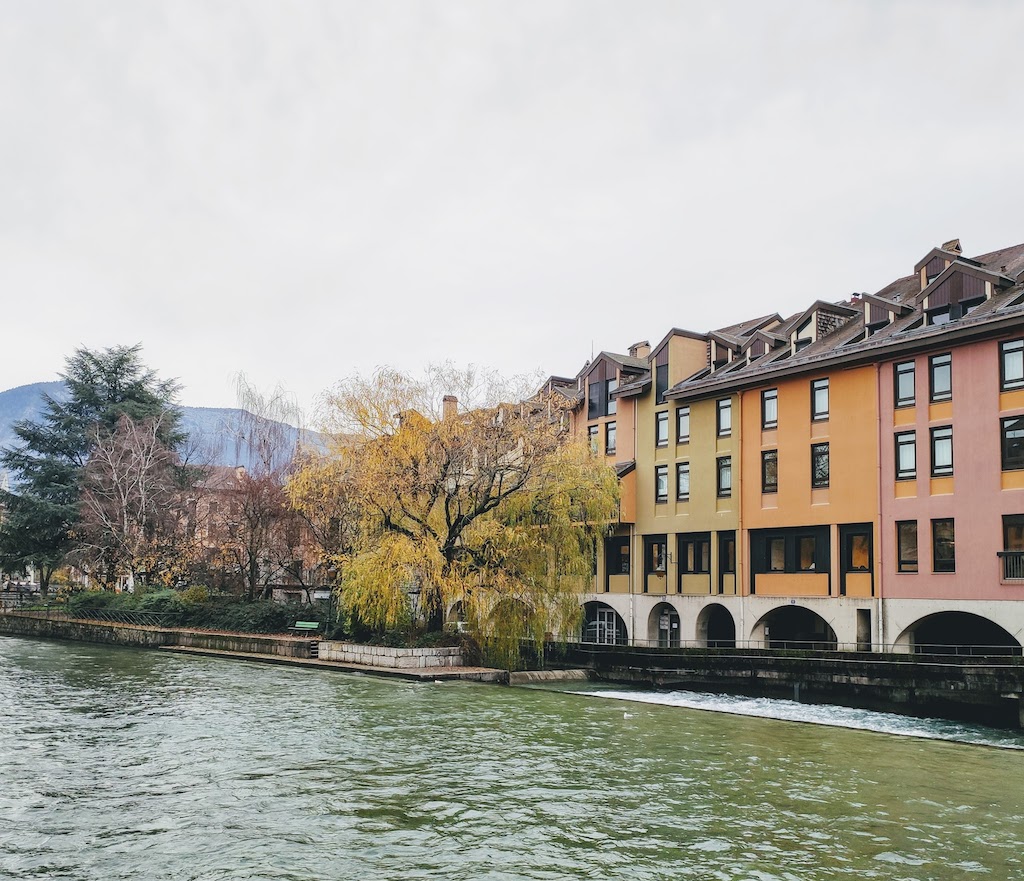

The company employed 1,400 people in 1847. Unfortunately, many children have been exploited, working up to 15 hours a day, and being beaten for a pittance. In the middle of the century, officials will question these practices.
The walk along the Thiou continues to a nearby town, Cran-Gevrier. After crossing the city, the Thiou becomes wilder again, and the walk continues on a charming shady path.
Conclusion
Annecy is a lovely city. The authenticity of its old town on the banks of the Thiou, its colorful houses, and its pedestrian streets make it a good place to stroll. There are also plenty of bar-restaurants that offer local specialties, and the terraces are very welcoming.
And after a good walk, what could be more relaxing than going to enjoy the shores of the lake to rest and admire the view of the mountains. 😊
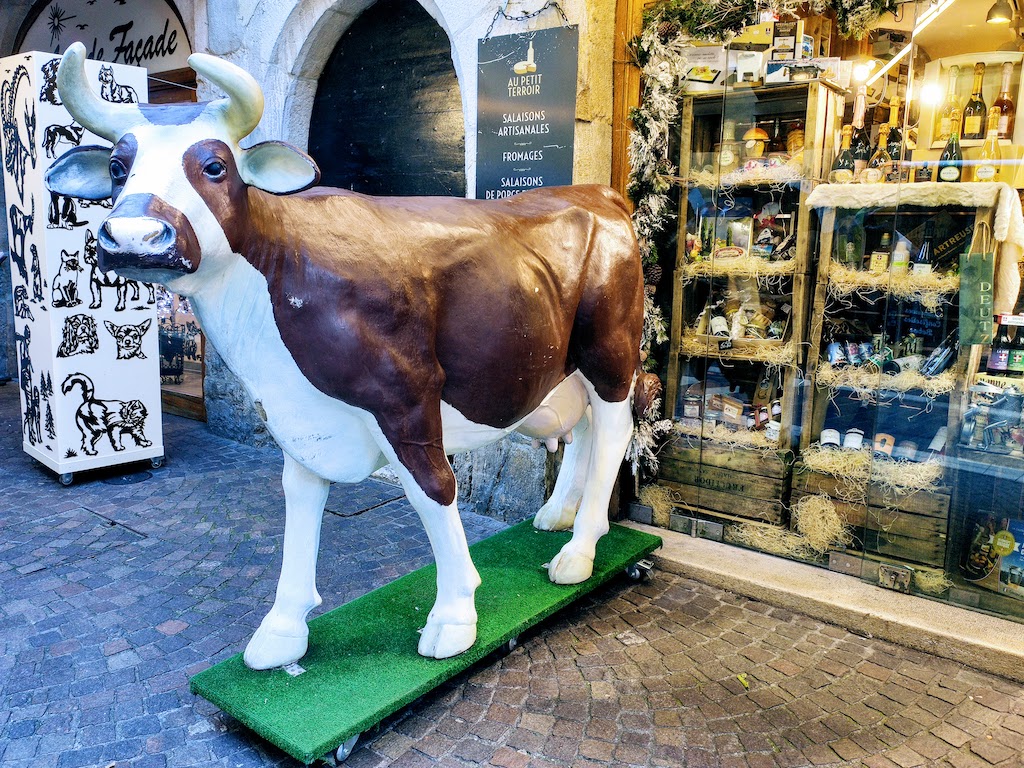


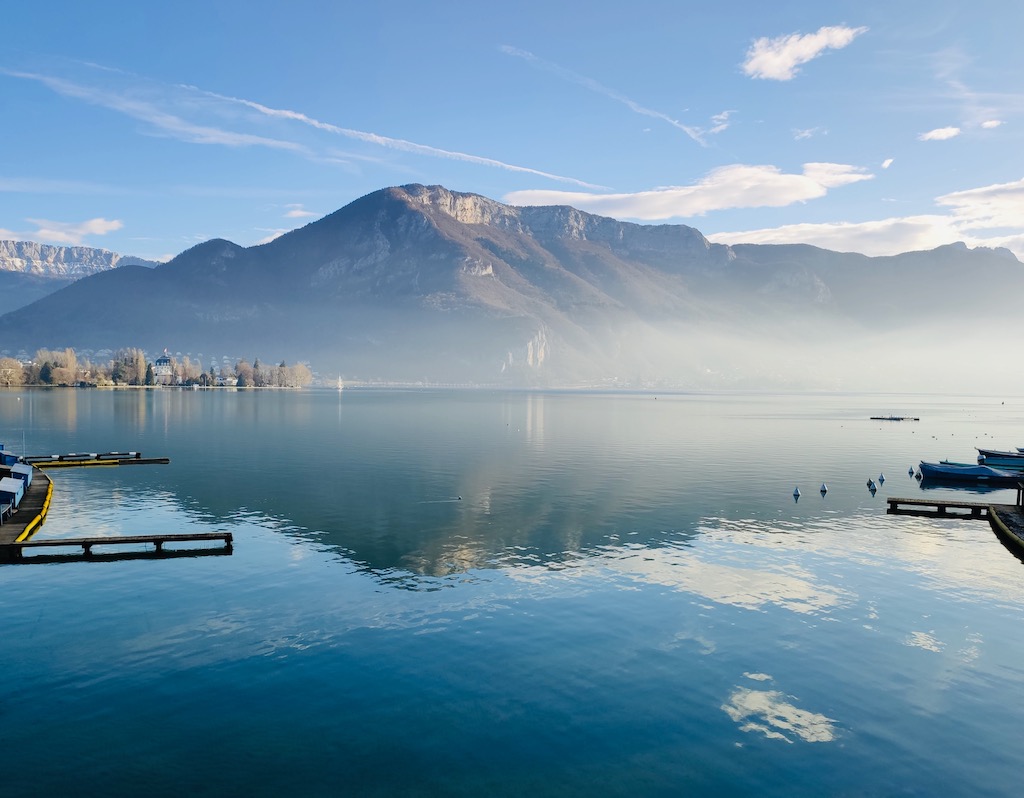
Loved all the pictures. Nice tour of what looks like a beautiful place 🙂 So many regions in France that I still need to visit….
Thank you. And each region is different. But Annecy and its surroundings are really a place where you have to come and spend a few days. 😁
I can see why you have kept that childhood love for Annecy. It’s so beautiful. Love those lake photos.
It’s always a real pleasure to come back between two trips.